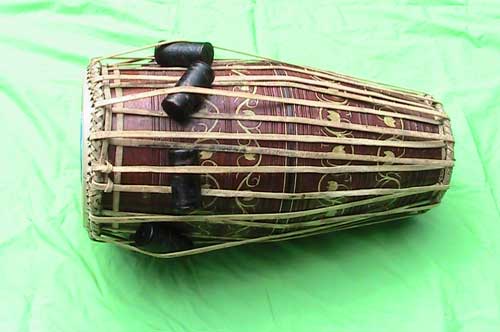
|
Pakhawaj is essentially a north Indian version of the mridangam
and is the most common north Indian representative of the class of
barrel shaped drums known as mridang. It was once common throughout
north India, but in the last few generations tabla has usurped its
position of importance. It has a right head which is identical to
tabla except somewhat larger. The left head is similar to the tabla
bayan except that there is a temporary application of flour and
water instead of the black permanent spot. It is laced with rawhide
and has tuning blocks placed between the straps and shell. It was once common throughout
north India, but in the last few generations tabla has usurped its
position of importance. It has a right head which is identical to
tabla except somewhat larger. The left head is similar to the tabla
bayan except that there is a temporary application of flour and
water instead of the black permanent spot. It is laced with rawhide
and has tuning blocks placed between the straps and shell.
There are several styles of pakhawaj playing. The most well known
and important is for the accompaniment of dhrupad and dhammar
singers; this however, is falling out of fashion. Pakhawaj is also
very much used for Orissi dancers and occasionally for kathak. It is
also found in a classical form from Rajasthan known as Haveli
Sangeet.
The playing
position is easy. For the right-handed person, the smaller end is
placed on the right hand and the larger side is placed on the left
side. the right side is usually raised slightly by placing a small
rolled up piece of cloth under it. The whole is place in front of
the musician as shown in the illustration. |
||